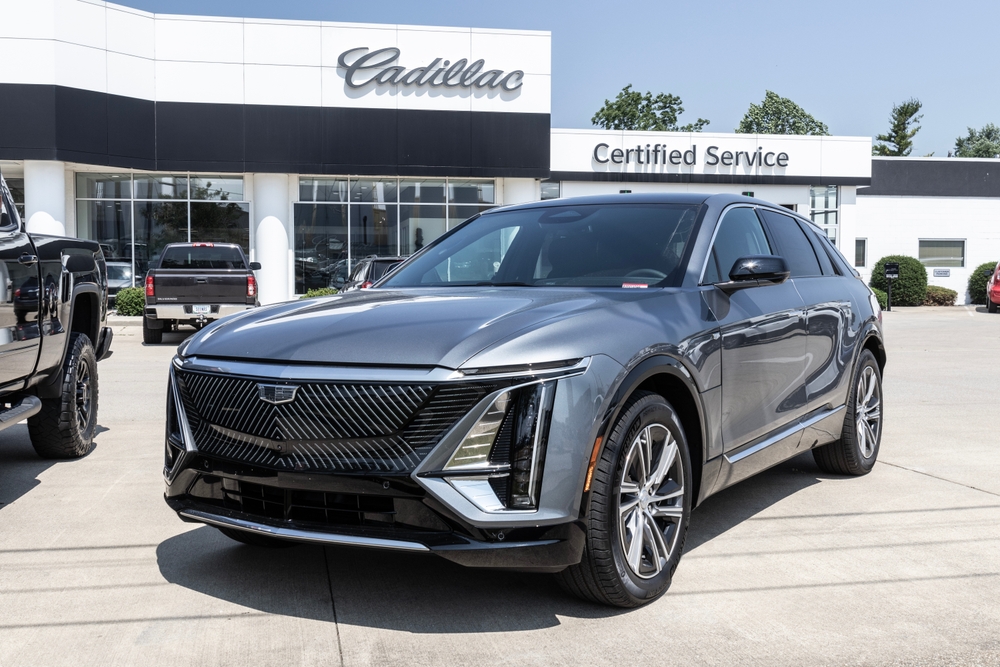Antique sewing machines are more than just functional tools; they’re beautifully crafted pieces of history that tell the story of a bygone era. Collectors are drawn to these rare machines not only for their intricate designs and unique engineering but also for the craftsmanship that has allowed many to endure for over a century. From ornate decals to innovative stitch mechanisms, each machine reflects the technological advances and aesthetics of its time. Many of these models, now highly sought after, fetch top dollar at auctions and antique shops. For those passionate about both sewing and history, these rare antique sewing machines are prized finds that stand as symbols of durability and timeless style.
Singer Model 66 “Red Eye”
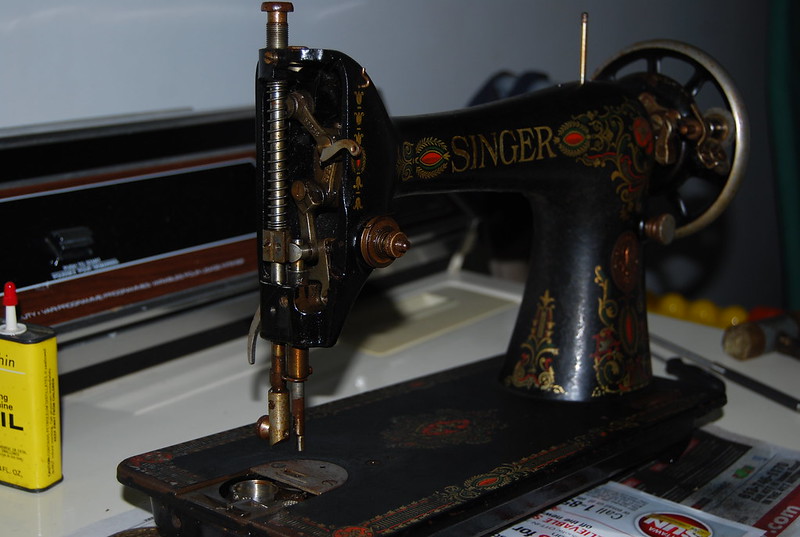
The Singer Model 66 “Red Eye” is one of the most visually distinct antique sewing machines, known for its intricate red and gold decal work. Introduced in 1902, this machine quickly gained popularity due to its advanced design and easy usability. Unlike earlier models, the Model 66 could stitch a perfect lockstitch, appealing to serious seamstresses of the time. Its nickname, “Red Eye,” comes from the vibrant red accents that decorate the machine. Collectors prize the “Red Eye” not only for its functionality but also as a striking display piece. Finding one in excellent condition is rare, and complete sets with the original wooden cabinet and accessories command a premium. Today, it’s a showpiece in many sewing collections, admired for its beauty and engineering.
Willcox & Gibbs Automatic
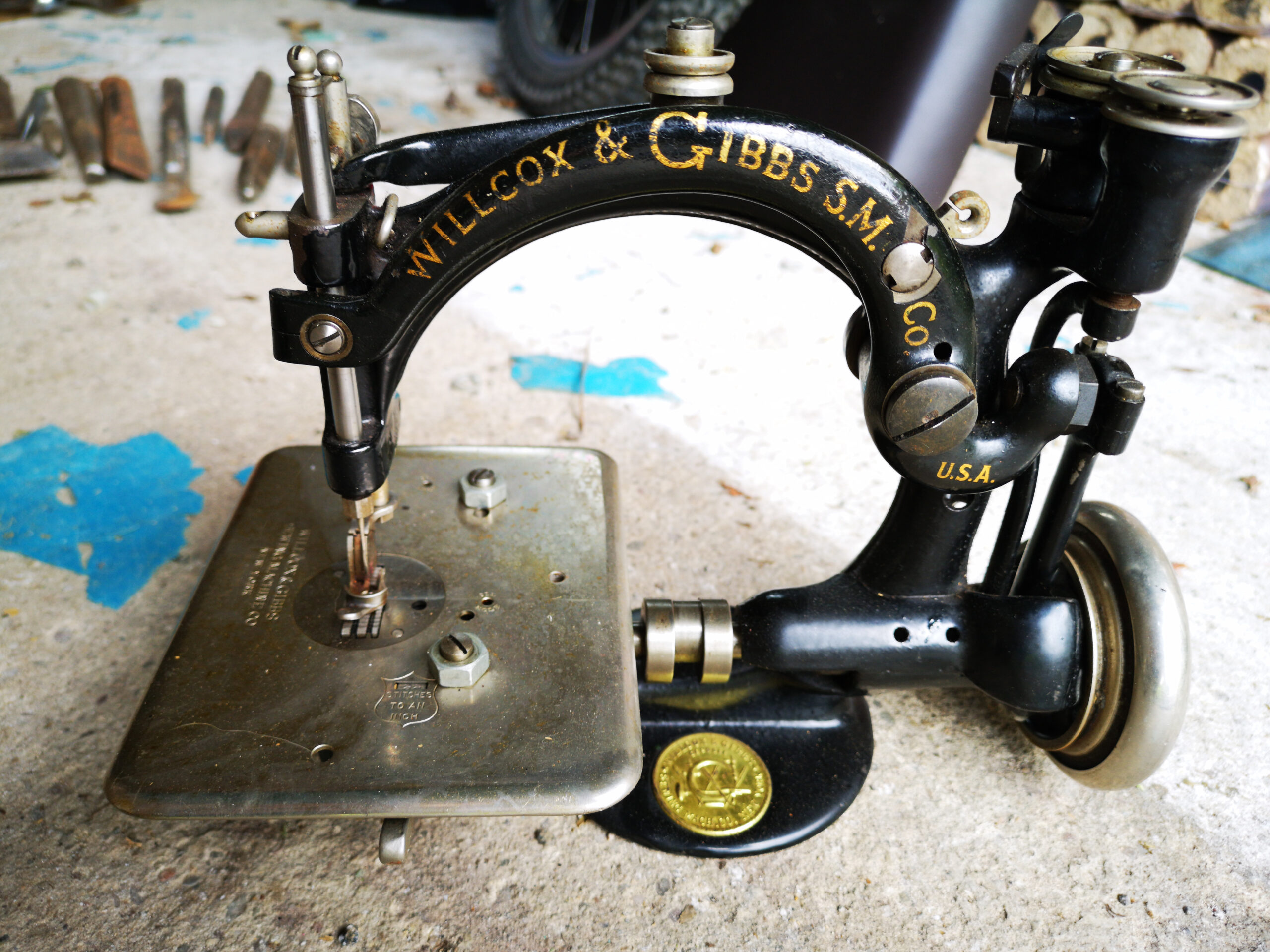
The Willcox & Gibbs Automatic sewing machine is renowned for its pioneering chain stitch mechanism, introduced in the mid-19th century. This innovative design allowed for quick, seamless stitches without the need for a bobbin, making it highly popular among professionals. Its elegant curves and compact design set it apart from bulkier models of its time. Collectors are drawn to its simplicity and the fact that it required minimal maintenance. Many machines still function today, showcasing its enduring build quality. Rare models with intact decals and original cases fetch high prices. This piece remains a testament to the durability of early sewing machine craftsmanship.
Singer Featherweight 221
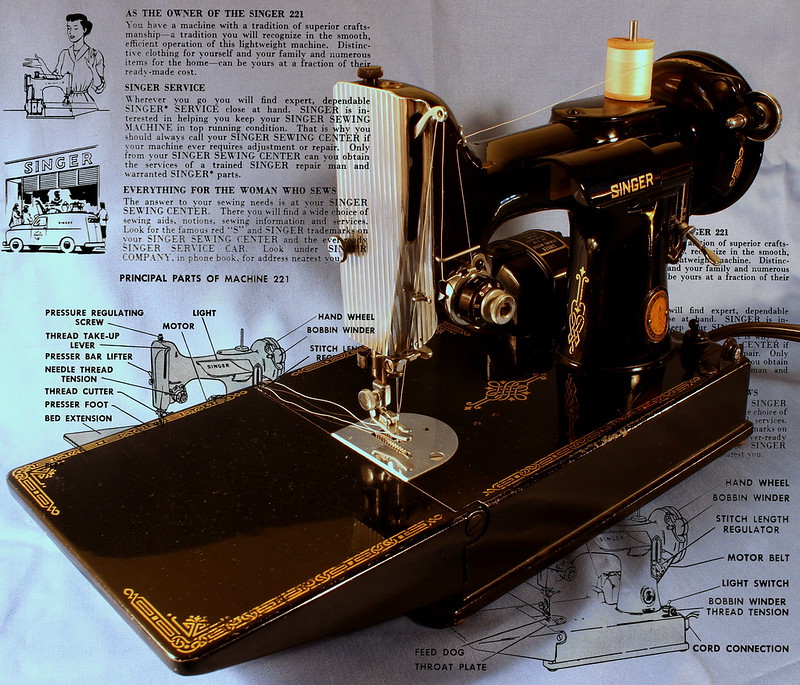
Introduced in the 1930s, the Singer Featherweight 221 was designed for portability, weighing just over 11 pounds. Its sleek, compact design made it a favorite for home sewers and travelers alike. This model is celebrated for its near-perfect stitch quality, which still rivals modern machines. Its all-metal construction and streamlined look also appeal to collectors seeking both form and function. Often referred to as the “Perfect Portable,” it was one of the best-selling Singer machines. Models with the original carrying case and attachments are particularly sought after. Featherweights in pristine condition are known to command top dollar due to their timeless appeal.
Bernina 117K
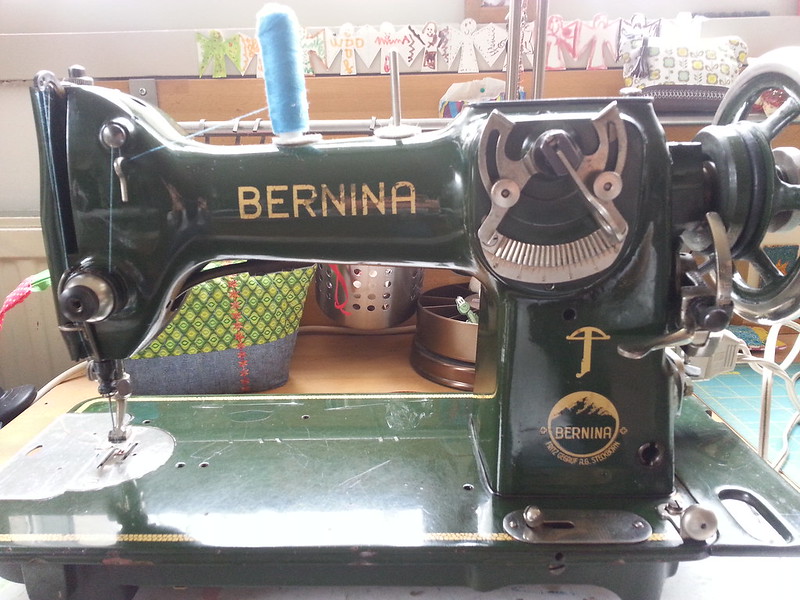
The Bernina 117K is a Swiss-made masterpiece that introduced zigzag stitching to home sewing in the 1930s. Its precision engineering and versatility set a new standard in the sewing machine industry. While most machines of its time were limited to straight stitches, the 117K could handle complex stitches with ease. Collectors love the sleek design and sturdy build, which has withstood decades of use. Machines with the original foot pedal and accessories are especially valuable. The Bernina 117K is a rare find, combining history with unmatched quality. Its place in sewing history as an early multi-stitch machine only increases its appeal.
Jones Family CS
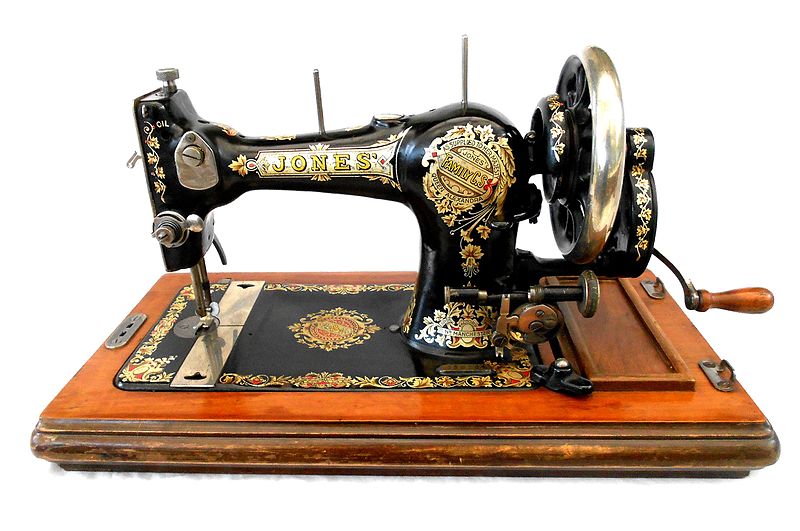
The Jones Family CS, produced by the British Jones Sewing Machine Company, is cherished for its ornate design and sturdy build. This late 19th-century model is known for its elegant floral decals and sleek black enamel finish. Unlike many machines of its era, it featured a vibrating shuttle mechanism that offered reliable stitch quality. Collectors are captivated by its unique British craftsmanship, as well as its historical significance. Machines with original decals and accessories tend to fetch a higher price. The Jones Family CS is considered a rare gem in sewing machine collections. Its distinctiveness and quality have stood the test of time.
Singer Model 27 Sphinx
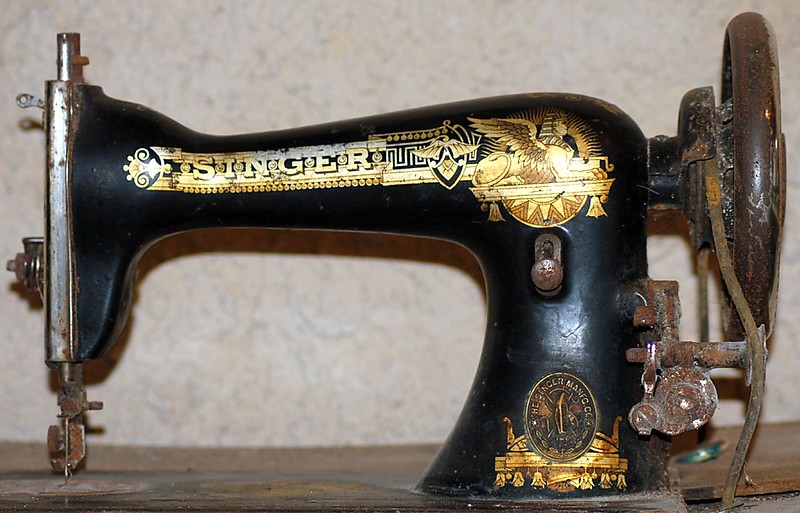
The Singer Model 27 “Sphinx,” named for its Egyptian-inspired decals, is a standout piece from the early 20th century. This model’s unique design features intricate, stylized sphinx motifs that captivate collectors. Known for its durability and versatility, it was popular in both homes and small tailoring shops. Its vibrating shuttle and high stitch quality add to its appeal as a functional antique. Machines with intact decals and original cases command significant prices. The “Sphinx” model has become a symbol of antique sewing machine beauty. Collectors seek this model for its fusion of function and artistry.
Frister & Rossmann Transverse Shuttle
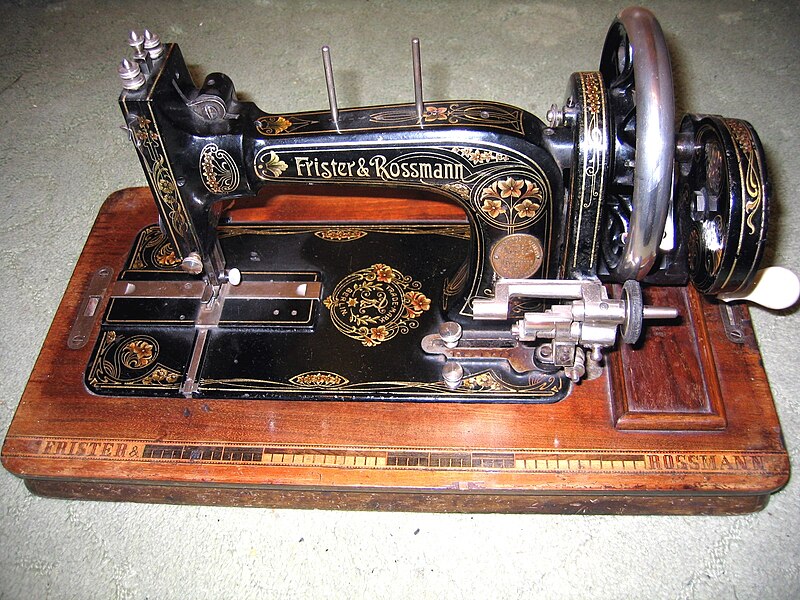
The German-made Frister & Rossmann Transverse Shuttle is a sought-after model known for its innovative shuttle mechanism. Launched in the late 19th century, this machine was popular across Europe for its quality and durability. Its cast iron body and intricate detailing make it a visually appealing addition to collections. Often featuring a richly decorated wooden case, these machines have maintained their charm over the years. Collectors value models with all original parts, as well as those with intricate floral decals. The Transverse Shuttle stands out in collections due to its unique stitching mechanism. Today, it’s admired for both its craftsmanship and aesthetic.
Elna Grasshopper
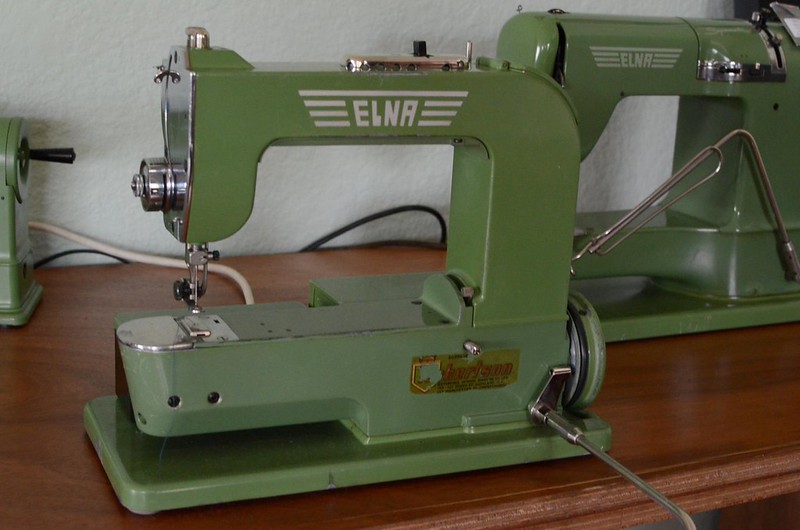
The Elna Grasshopper, launched in 1940 by Tavaro SA in Switzerland, was one of the first truly portable electric sewing machines. Its distinctive green color and compact design made it a favorite among homemakers and travelers. Known for its foldable extension table and convenient carrying case, it set a new standard for portability in sewing machines. Collectors are drawn to its practical design and innovative features. Machines with the original accessories, including the distinctive “grasshopper” case, fetch a high price. Its sleek, mid-century design makes it a standout piece. The Elna Grasshopper remains a beloved collectible due to its unique style and engineering.
Singer Model 99
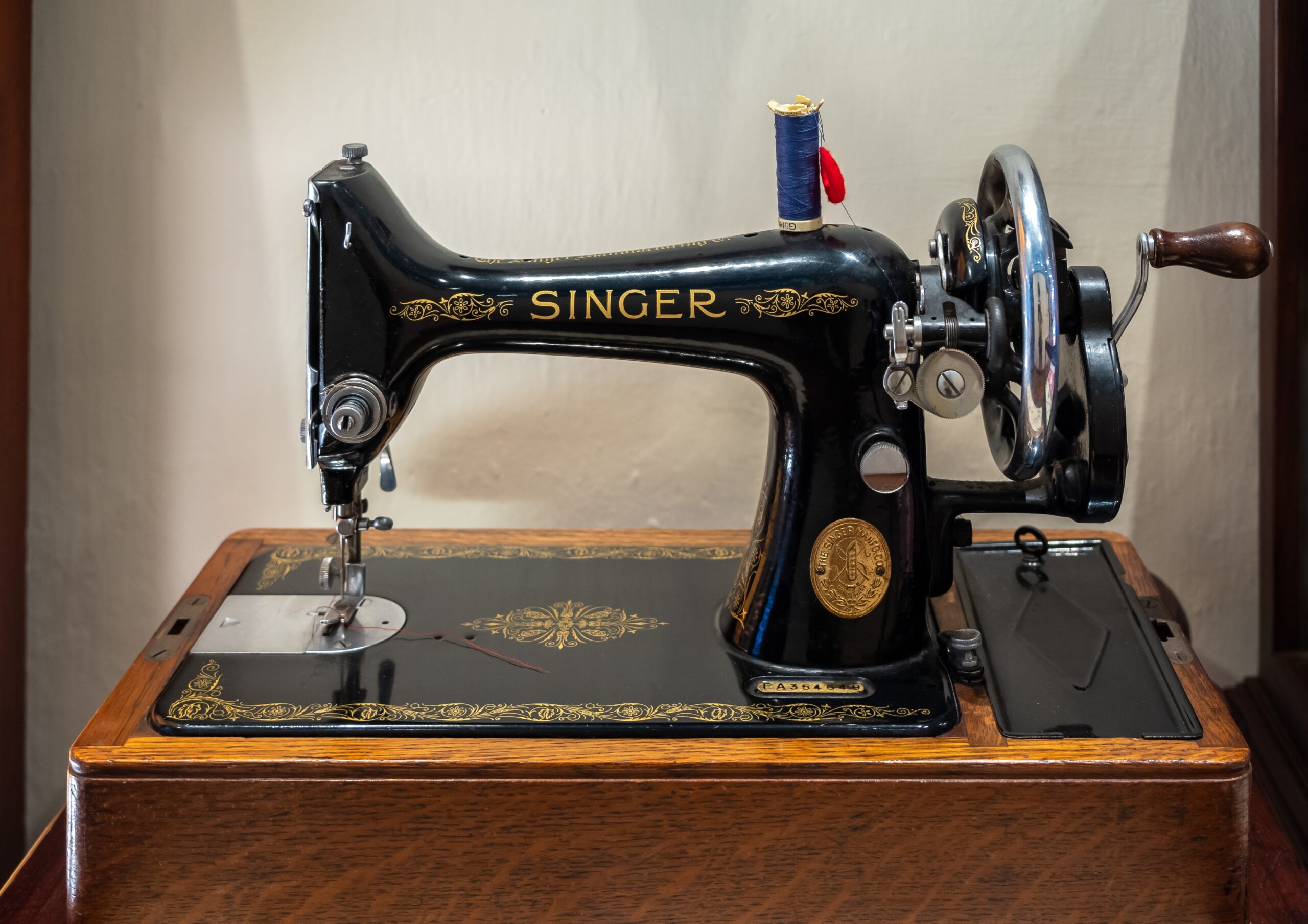
The Singer Model 99, launched in the 1920s, was designed as a compact alternative to the full-size Singer machines. Weighing only about 25 pounds, it was one of the first portable machines, ideal for home use. Despite its smaller size, it delivered high-quality stitches and proved durable over time. Collectors are drawn to its practicality and historical significance as a compact sewing solution. Machines in excellent condition with original decals and cases are highly valued. The Model 99 combines the reliability of Singer with a convenient size. This model remains popular among antique sewing machine collectors for its functionality and charm.
Singer 201K
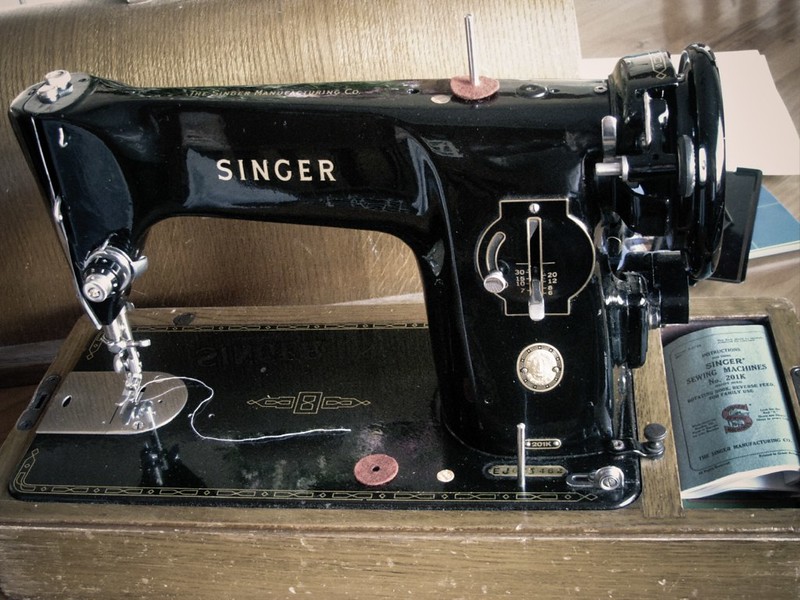
The Singer 201K, produced from the 1930s to the 1950s, is celebrated for its smooth stitching and powerful motor. This machine was designed for heavy-duty use and could handle thick fabrics like denim and leather with ease. Its streamlined design, often featuring subtle gold decals, makes it a beautiful yet practical addition to collections. The 201K’s durability and near-silent operation have kept it popular among sewing enthusiasts even today. Machines in pristine condition with original parts and accessories fetch high prices among collectors. Its reputation as a workhorse machine only adds to its value. The Singer 201K remains a symbol of industrial strength and elegance.
Bradbury Hand Machine
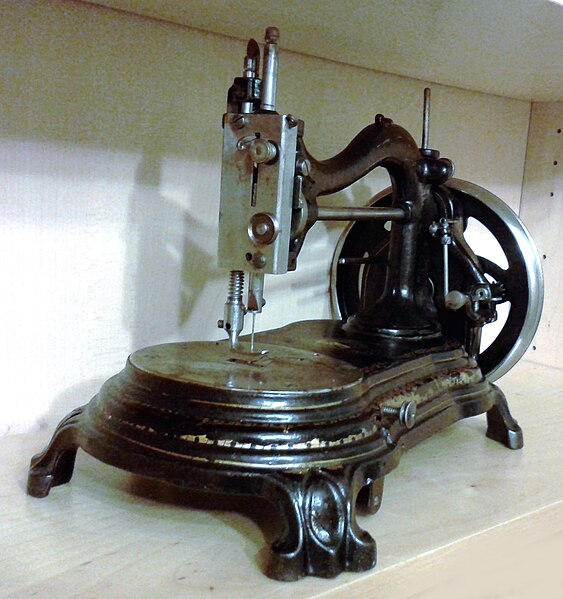
The Bradbury Hand Machine, manufactured in the late 19th century in England, is a highly sought-after collector’s item. Known for its hand-crank operation and intricate cast iron body, this machine is both functional and visually captivating. Its elegant designs and scrollwork are rarely found in modern machines, giving it a distinctive charm. Collectors prize models with original wooden cases and hand-crank mechanisms. Despite its age, many Bradbury Hand Machines still operate smoothly, showcasing the durability of Victorian-era engineering. Machines with intact decals and accessories fetch impressive prices. The Bradbury is a rare find, cherished for its craftsmanship and historical significance.
Singer 222K Featherweight
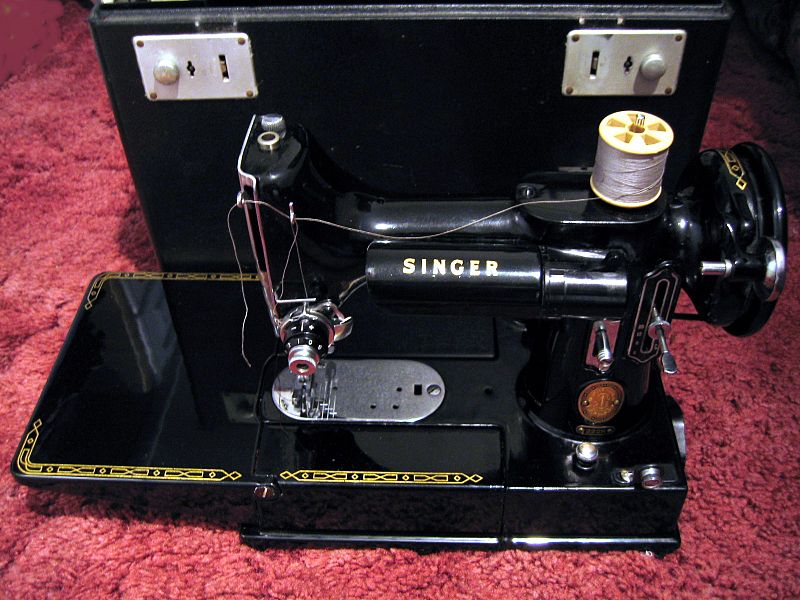
The Singer 222K Featherweight, a rare variant of the iconic Featherweight series, was manufactured primarily in the United Kingdom. This model is unique for its ability to convert into a free-arm machine, making it highly versatile for sewing small or tubular pieces. The 222K is renowned for its excellent stitch quality, lightweight design, and portability. Collectors are drawn to its dual functionality and rarity, as fewer units were produced compared to the original Featherweight 221. Machines in good condition with original accessories, including the case, command premium prices. The 222K’s collectible value and versatility make it a prized piece among antique sewing enthusiasts.
This article originally appeared on Rarest.org.
More From Rarest.Org
As the automotive industry rapidly shifts toward cleaner, smarter vehicles, a new wave of futuristic electric cars is redefining what’s possible on the road. These electric models bring innovation to every corner, from extended battery ranges and ultra-fast charging to AI-driven interfaces and immersive entertainment systems. Read more.
Baseball stadiums across the United States are as iconic as the teams that play in them, each offering unique features, history, and an atmosphere that makes game days unforgettable. From retractable roofs to historic architecture, they are designed to enhance the fan experience while accommodating thousands of passionate supporters. Read more.
Lakes are some of the most stunning and varied natural features on Earth, covering vast areas and housing unique ecosystems. The world’s largest ones span multiple countries, serve as critical water sources, and provide habitat for countless species. Read more.

